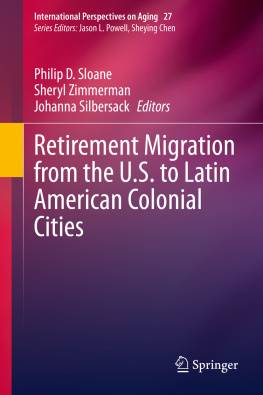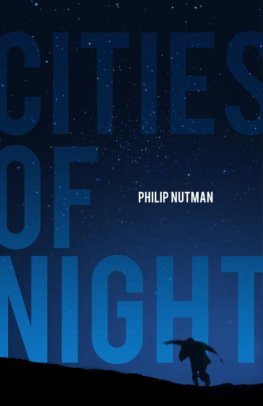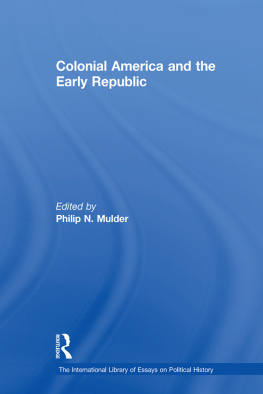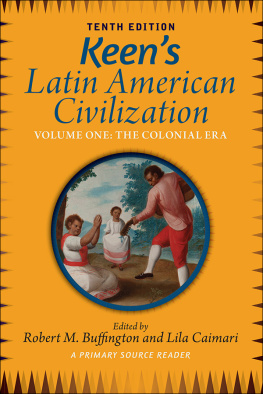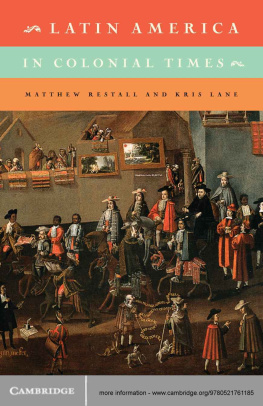Philip D. Sloane - Retirement Migration from the U.S. to Latin American Colonial Cities
Here you can read online Philip D. Sloane - Retirement Migration from the U.S. to Latin American Colonial Cities full text of the book (entire story) in english for free. Download pdf and epub, get meaning, cover and reviews about this ebook. year: 2020, publisher: Springer International Publishing, genre: Politics. Description of the work, (preface) as well as reviews are available. Best literature library LitArk.com created for fans of good reading and offers a wide selection of genres:
Romance novel
Science fiction
Adventure
Detective
Science
History
Home and family
Prose
Art
Politics
Computer
Non-fiction
Religion
Business
Children
Humor
Choose a favorite category and find really read worthwhile books. Enjoy immersion in the world of imagination, feel the emotions of the characters or learn something new for yourself, make an fascinating discovery.
- Book:Retirement Migration from the U.S. to Latin American Colonial Cities
- Author:
- Publisher:Springer International Publishing
- Genre:
- Year:2020
- Rating:4 / 5
- Favourites:Add to favourites
- Your mark:
- 80
- 1
- 2
- 3
- 4
- 5
Retirement Migration from the U.S. to Latin American Colonial Cities: summary, description and annotation
We offer to read an annotation, description, summary or preface (depends on what the author of the book "Retirement Migration from the U.S. to Latin American Colonial Cities" wrote himself). If you haven't found the necessary information about the book — write in the comments, we will try to find it.
Retirement Migration from the U.S. to Latin American Colonial Cities — read online for free the complete book (whole text) full work
Below is the text of the book, divided by pages. System saving the place of the last page read, allows you to conveniently read the book "Retirement Migration from the U.S. to Latin American Colonial Cities" online for free, without having to search again every time where you left off. Put a bookmark, and you can go to the page where you finished reading at any time.
Font size:
Interval:
Bookmark:
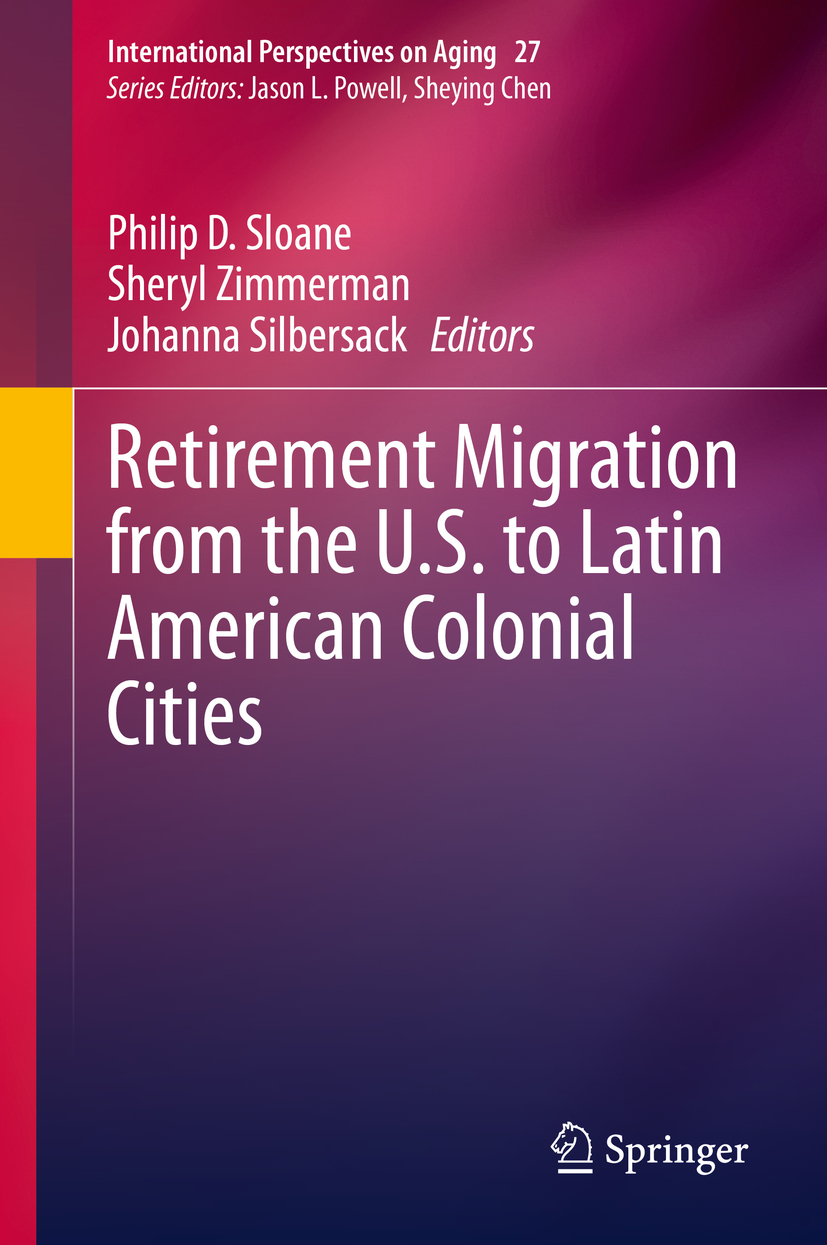
The study of aging is continuing to increase rapidly across multiple disciplines. This wide-ranging series on International Perspectives on Aging provides readers with much-needed comprehensive texts and critical perspectives on the latest research, policy, and practical developments. Both aging and globalization have become a reality of our times, yet a systematic effort of a global magnitude to address aging is yet to be seen. The series bridges the gaps in the literature and provides cutting-edge debate on new and traditional areas of comparative aging, all from an international perspective. More specifically, this book series on International Perspectives on Aging puts the spotlight on international and comparative studies of aging.
More information about this series at http://www.springer.com/series/8818

This Springer imprint is published by the registered company Springer Nature Switzerland AG.
The registered company address is: Gewerbestrasse 11, 6330 Cham, Switzerland
At one extreme, cities can be seen as hubs of innovation and progress, full of energy, culture, and life. At another extreme, they can be seen as noisy, depressing, artificial, and crowded yet isolating. From either point of view, the trend toward human urbanization is unmistakable. It is global and historic, and it may also be our planets future environmentally, economically, and culturally.
In April of 2019,National Geographicpublished a special issue titled Cities: Ideas for a Brighter Future in which the central concept held that sustainable cities were not necessarily bad for the environment; in fact, they could be ideal solutions for many of the challenges faced by our growing and aging populations. The magazine issue was born in part from our internal conversations on the subject of cities and from a request for grant proposals (RFP) from researchers around the world for projects that would address, in new and unique ways, how the future of our planet would be one in balance with nature, yet still urban, globally interconnected, and cosmopolitan.
This book by Dr. Philip Sloane and colleagues, spurred in part by aNational GeographicRFP Grant, represents an ambitious and comprehensive look at a unique challenge faced by cities in many developing parts of the world: how do cities with deep cultural roots accommodate to international retirement migration from very culturally distinct, often wealthier, parts of the world. In hisNational Geographic-funded project, Dr. Sloane and colleagues studied two Latin-American cities, Cuenca in Ecuador and San Miguel de Allende in Mexico, both of which have seen high migration from American retirees. The team employed an array of research methods and sources, including interviews with local residents, online questionnaires, geospatial mapping, social media, local media, field notes, and photography. In doing so, they covered a breadth of topics ranging from the changing quality of life for a retired migrant to how the exodus was changing healthcare access across nations and impacting local languages and traditions.
In the fourth chapter, for example, the team looked at the difference between the two cities in how local residents attitudes were changing based on how long retirees had been there. San Miguel de Allende, in Mexico, has seen migrant retirees for decades. The population of Americans, or gringos, is about 10%, having been arriving there since the 1940s. Seventy percent or so of the Americans have integrated, explained a native resident. They are a part of that modern Mexican city. In contrast, in Cuenca, the American retiree population is less than 2%, and the economic and social changes that arrive with that influx have not been felt for as long, I think it is good that they move here, a Cuenca resident said, but they should accept our rules and procedures, and they should treat Ecuadorians as they want to be treated.
This fascinating work is one particular view of how cities around the world are changing. It provides a glimpse at how cities will continue to evolve in the future, especially as international air travel grows, social media continues to bridge great distances from the convenience of a cell phone, and our vast planet grows ever smaller and more crowded. Social scientists often paint a picture of doom as the world population creeps toward an 11th digit (10 billion by 2050). However, this study is a great example of how global interconnectedness has strong merits, how cities and cultures within those cities are malleable and continue to change and evolve, and how retiree migration can be a win-win scenario for those arriving and for those already there. The authors show us a light at the end of that airport runway.
We would like to thank our local coordinators from each city, who assisted with the logistics, arranging of interviews, and shaping of the research over the development of the research protocol and throughout data collection. Without Kati Alvarez, a sociologist based at the Universidad Central of Quito, and Roberto Robles Iniestra, a retired engineer who lives in San Miguel de Allende, this work would not have been possible. Although we were not able to visit Granada, Nicaragua, at the time of this research as originally intended, we would like to thank Milton Lpez Norori, MD, MPH, based at the Universidad Nacional Autnoma de Nicaragua, as well, for his input on our research methods.
Font size:
Interval:
Bookmark:
Similar books «Retirement Migration from the U.S. to Latin American Colonial Cities»
Look at similar books to Retirement Migration from the U.S. to Latin American Colonial Cities. We have selected literature similar in name and meaning in the hope of providing readers with more options to find new, interesting, not yet read works.
Discussion, reviews of the book Retirement Migration from the U.S. to Latin American Colonial Cities and just readers' own opinions. Leave your comments, write what you think about the work, its meaning or the main characters. Specify what exactly you liked and what you didn't like, and why you think so.

